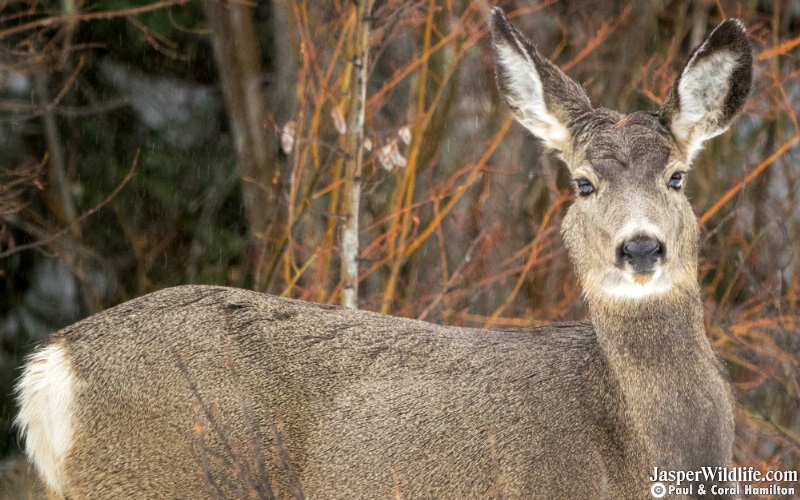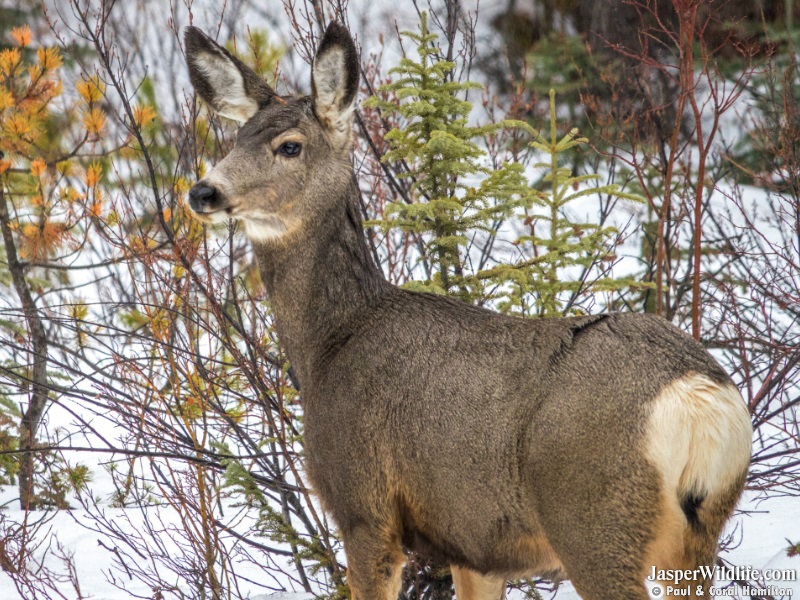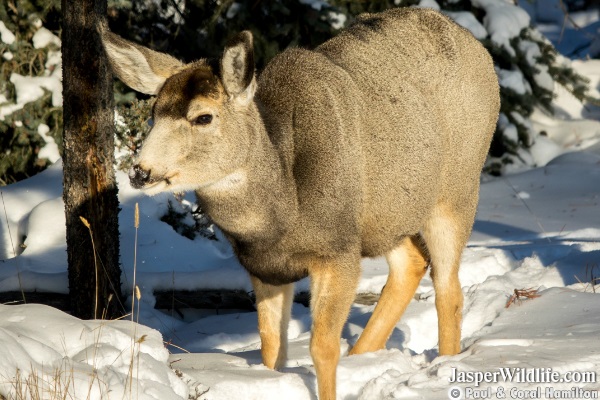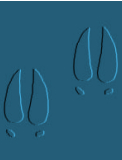(Odocoileus hemionus) MULE DEER
How large is Jasper Alberta's Mule Deer?
- Mass: 43 to 150 kg
Length: to 6 ft. (1.8 m) - Wildlife living area: tropical deciduous forest,temperate forest & rainforest,temperate grassland,chaparral,mountains,desert.
Status: no special status.
Range: Odocoileus hemionus occurs over most of North America west of the 100thmeridian from 23 degrees to 60 degrees N. The eastern edge of the usual range extends from southwestern Saskatchewan through central North and South Dakota, Nebraska, Kansas, and western Texas. Major gaps in geographic distribution are in southern Nevada, southeastern California, southwestern Arizona, and the Great Salt Lake desert region. Apart from these gaps, O. hemionus occurs in all of the Wildlife living area of western North America north of central Mexico, except the Arctic tundra. - Mule deer are characterized by a gray winter coat or brown summer coat; a white colored throat, chin, and rump; and bucks have antlers which fork and then fork again. Mule deer are commonly mistaken for white-tailed deer.

Where do Mule Deer Live?
Mule Deer Winter Fur and Food
Mule Deer have great adaptations to survive in frigid winter temperatures.
Among many other grasses and plants, mule deer can consume pine needles throughout their grazing season. Both needles from live trees as well as dry needles from downed trees are eaten in quantities as seen here.
Mule Deer's thick winter coats have hollow guard hairs like polar bears. Very fine hair under their guard hairs insulate them well from the cold. The dark color of Mule Deer's winter fur helps absorb the suns heat, keeping them warmer.
While Mule Deer Fawns usually are weaned after just two to three months, Female fawns often stay with their mothers for two years; while young bucks leave after one year.
Mule Deer have four chambered stomachs, of which offer them an ability to obtain more nutrition from woody plants they eat. They do this by bringing up previously swallowed loads of food.. an act called chewing the 'cud'.
Rocky Mountain Mule Deer Bucks end of July
Mule Deer's Natural Ability to Blend into their Environment

Details on Jasper's Mule Deer
Mule deer are herbivorous and feed on mountain mahogany, chokecherry, grasses, sagebrush, serviceberry, bitterbrush, and forbs (forest herbs).

Heavy snows force the mule deer to consume sage and juniper, as well. Though food is abundant in the warmer seasons, winter starvation is a common cause of death for the mule deer. Overwinter mortality of fawns up to 75 percent is considered normal.
Tracks are 2 - 3 in. (5 - 8 cm.) long. Dew claws are evident in snow, mud or soft soil, and when running.

Mule Deer Tracks

